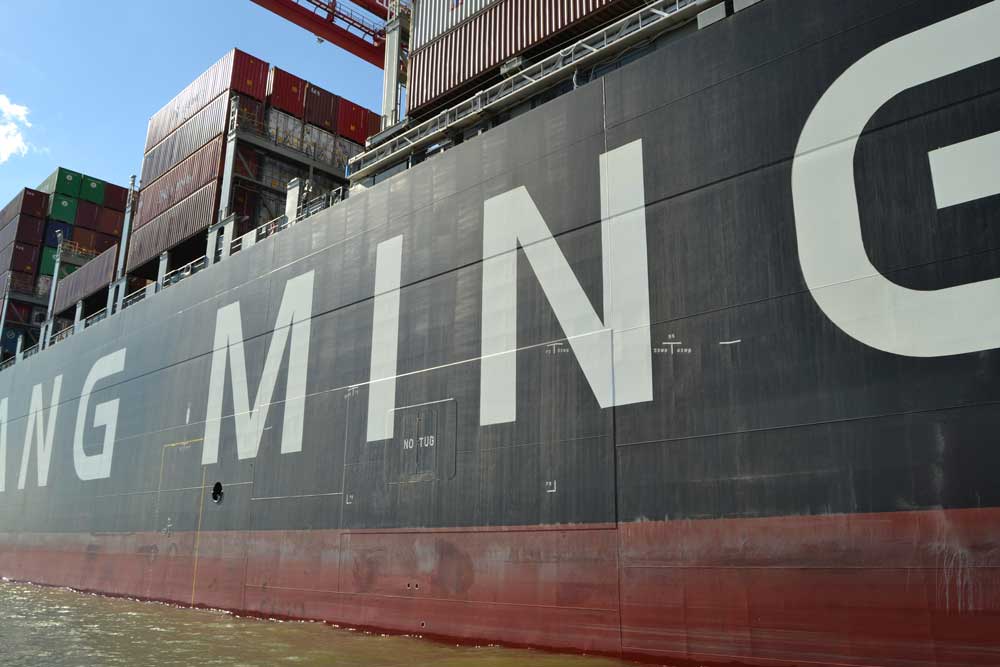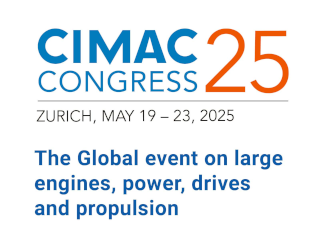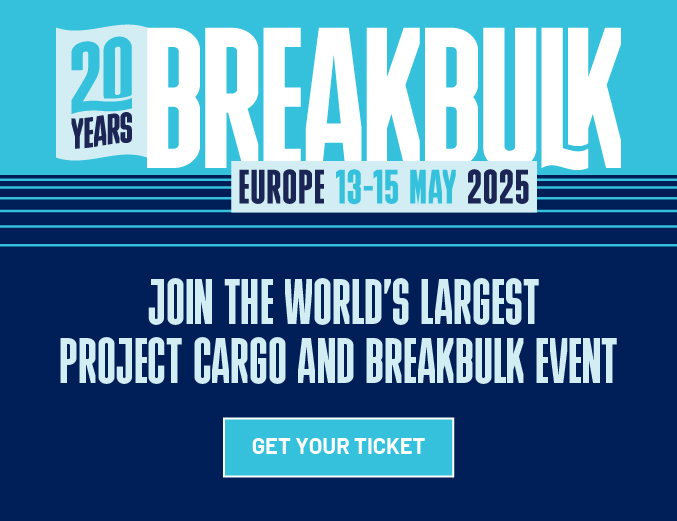Charter rates for some container ship types show marginal improvements early in the year. Cargo volumes and freight rates were trending up lately, writes Michael Hollmann
No doubt, supply/demand fundamentals in the container ship charter market do not look attractive for 2017 (see last issue[ds_preview] of HANSA). Yet, there has been a little positive momentum building at the start of the new year as excess availability of tonnage nudged down following accelerating demolition sales over the past months. Also, chartering activity turned out higher than many had expected, especially for vessels between 2,500 and 3,500 TEU and partly for large and very large vessels in excess of 5,300 TEU as well.
The idle fleet count by Paris-based Alphaliner – the research division of shipbroker Barry Rogliano Salles – revealed another marginal contraction in laid-up, decommissioned and charter-free container ship capacity to 351 units of 1.4 million TEU capacity as per 9 January – down from 1.42 million TEU in late December. This includes both liner-owned and charter-free tramp tonnage. It is generally good news but not enough, though, to boost sentiment. Spot/prompt open positions of charter vessels (the part of the idle fleet that competes most heavily for vessel requirements by operators) show a reduction in some size classes. Even so, the number of ships seeking employment remains high and thwarts any meaningful gains in market rates.
According to Alphaliner, the number of spot panamax tramp ships (4,000–5,100 TEU) stood at 62 units as per middle of January, versus 72 about a month ago. The researchers also reported a clear downward trend in spot availability for »sub-panamax«/handy ships of 2,000-2,700 TEU to 18 ships, down from 24 a fortnight ago.
However, specific vessel types do not necessarily record the same trend, according to other market participants, with one Hamburg chartering broker even reporting a rise in availability of geared 2,500 TEU charter ships from 7 to 13 only in Asia between mid-December and mid-January. So, there appears to be no straight-forward improvement in supply/demand from a pure data perspective that would support a sustained firmer trend in charter rates.
Fixing activity fairly high
But then, many brokers did perceive fixing activity to be fairly high in the opening weeks of 2017, especially since most expected a rather dull start to the new year without much stimulus until Chinese New Year which falls very early this year.
Cargo volumes and freight rates, though, were trending up lately, bringing back some confidence to the liner shipping industry that operates the vessels. Spot rates for shipments from the Far East to North Europe remained relatively firm at over 1,000 $/TEU until mid-January while transpacific freight rates went up steeply on the back of recent general rate increases (see market compass bar: Container freight market).
Upswing in trading volumes
Of course, capacity management remains the order of the day for liner operators given the massive backlog of unemployed liner- and tramp-owned ships. But an apparent upswing in trading volumes seems to have pushed slot utilization to levels that allowed them to mark freight prices up.
Of note, the global container handling index published by German institutes RWI and ISL posted its strongest increase in many months for November, reaching 122.1 points versus 120.0 in October.
Liftings clearly picked up in the Asia-Europe trade, with UK-based Container Trades Statistics reporting a 3.9% year-on-year rise in headhaul (westbound) volumes for November. One of the driving factors must have been the latest depreciation in the Chinese renminbi which dropped to an eight-year low against the US Dollar at the end of last year. Chinese exports thus became more competitive again.
Meanwhile, December saw further increases in purchasing manager indices for the Eurozone and most major overseas economies, pointing to a marked improvement in business activity which usually also sparks more shipping activity.
Gains for Wide-Beams
In the charter market, demand for large and very large vessels picked up quite a bit in January after very slow trading during December. The biggest ship reported fixed was the 9,030 TEU »Switzerland« (Ex-»Hanjin Switzerland«) from Turkish owner Ciner at a relatively firm rate of 13,000 $/day for 12-18 months to Taiwan’s Yang Ming Line. Competition for charter cover in the very large 7,500-10,100 TEU sector continues to be high, though, with Alphaliner counting 16 spot ships plus 10 ex-Hanjn operated vessels of 8,500 to 10,000 TEU, which are expected to get marketed for chartering again soon.
In the large vessel sector (5,300-7,500 TEU), quite a number of charter transactions emerged, but mostly at reported rate levels around last done. Perhaps the firmest fixture was a very short period on the modern wide-beam 6,882 TEU »Cape Chronos« at 8,500 $/day done by Emirates Shipping Line.
Upswing in trading volumes
Traditional panamax vessels continued to be covered at established levels in the low $4,000’s but there was some improvement for wide-beam vessels of 4,600-5,100 TEU as spot/prompt availability for this type in Asia dropped to three units (2 weeks forward), according to a German broker. Hence, charter market rates improved with the fixture of the 2014-built 4,957 TEU »Tommi Ritscher« at 6,600 $/day for a 4-6 month period to Cosco.
Two wide-beam sisters, the 4,896 TEU »Hammonia America« and »Hammonia Virginia«, were even reported fixed for 4-year periods at $10,000 per day to Maersk. This is significantly more than the mid $6,000’s commonly paid for short and flexible periods today, but also significantly less than the peak rates of over $20,000 per day back in 2015. Whether it’s a good deal for the charterer or a better deal for Hammonia Reederei is going to depend on the direction of the spot market over the coming years … A gentle lift in hire rates was also recorded on vessels with intakes of 2,500 (geared) and 2,700/2,800 TEU (gearless). The 2,824 TEU ›E.R. Montpellier« fetched 6,250 $/day for 6-10 months trading for CMA CGM in the Atlantic.
Michael Hollmann

















